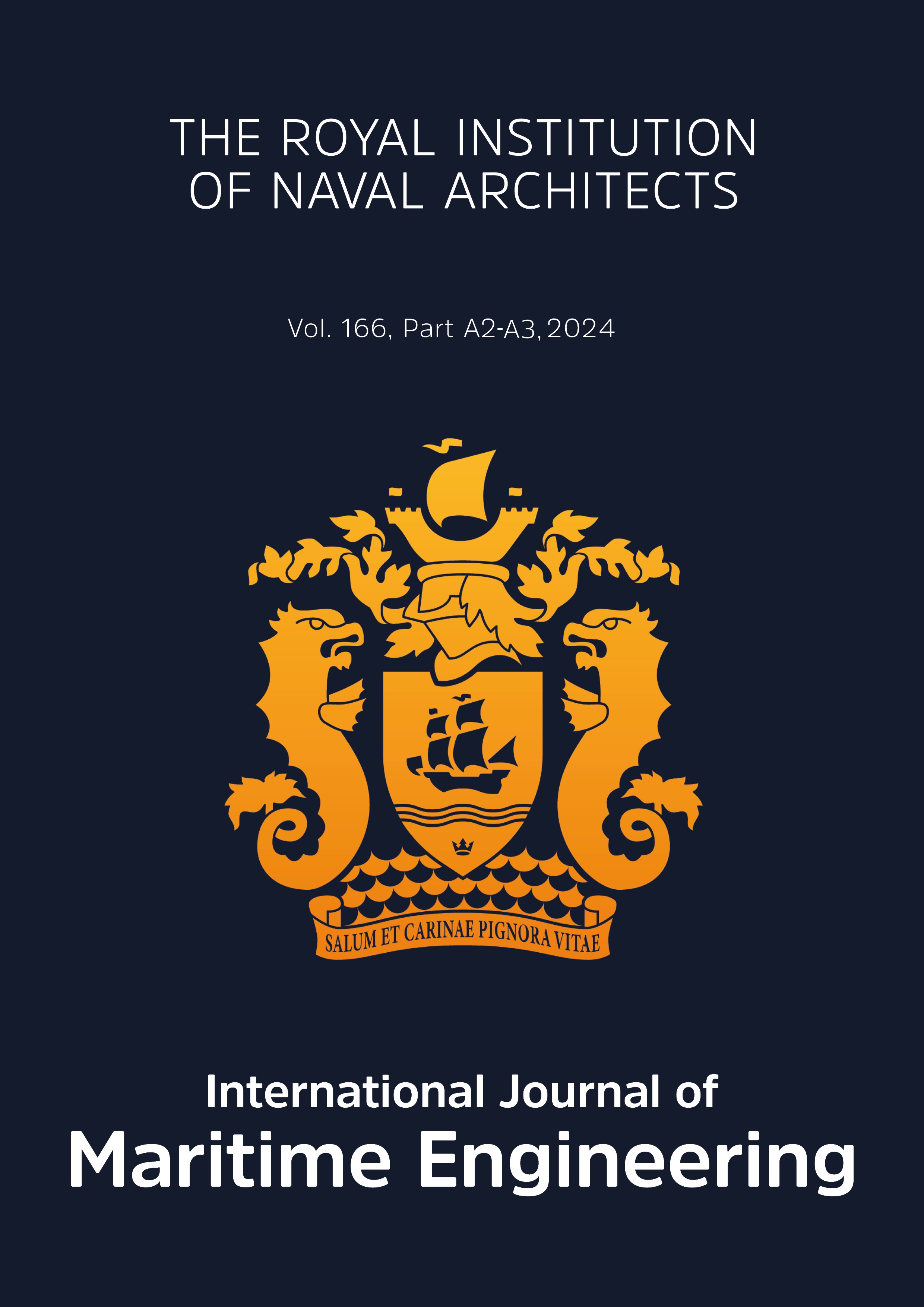Experimental Testing of Riveted Carvel Planks on Frames for Traditional Timber Structures
Main Article Content
Abstract
Traditional wooden boats are characterised by closely spaced frames, riveted to thick planks, leading to high thickness-to-span ratios. However, the effect of such closely spaced frames and thickness-to-span ratio remains uncharacterised. Consequently, four-point bending tests are undertaken to quantify the ultimate flexural strength and flexural modulus of wooden planks with up to 3 frames and thickness-to-span ratios from 0.0267 to 0.200. The results show that (i) a greater number of frames for a given span yields a reduction in specific stiffness but a constant specific strength; (ii) a maximum thickness-to-span ratio of 0.080 and 0.050 is recommended to ensure the strength and stiffness exceed regulatory default properties, respectively, and (iii) additional factors of safety would be needed for traditional construction to be included in existing structural regulations. These findings provide novel insights into the structural design of traditional wooden boats and may contribute to their future inclusion in regulatory frameworks.
